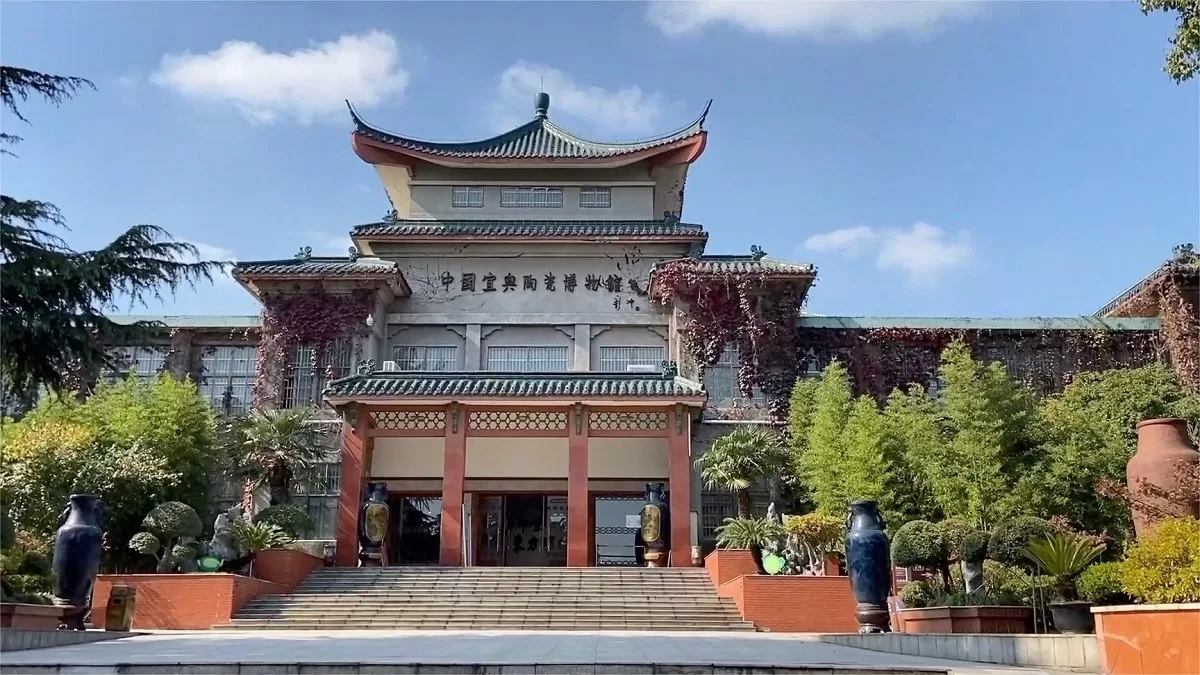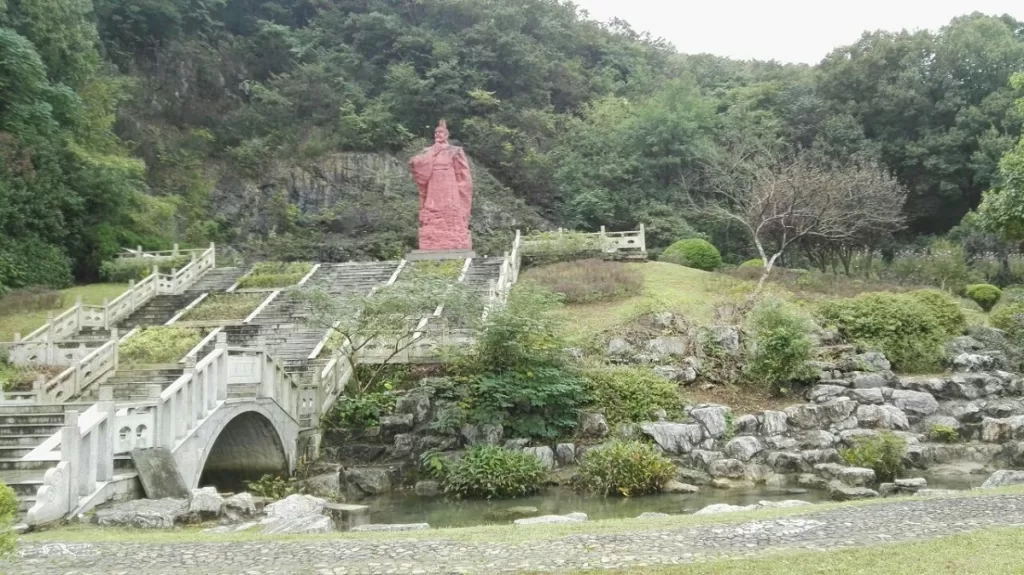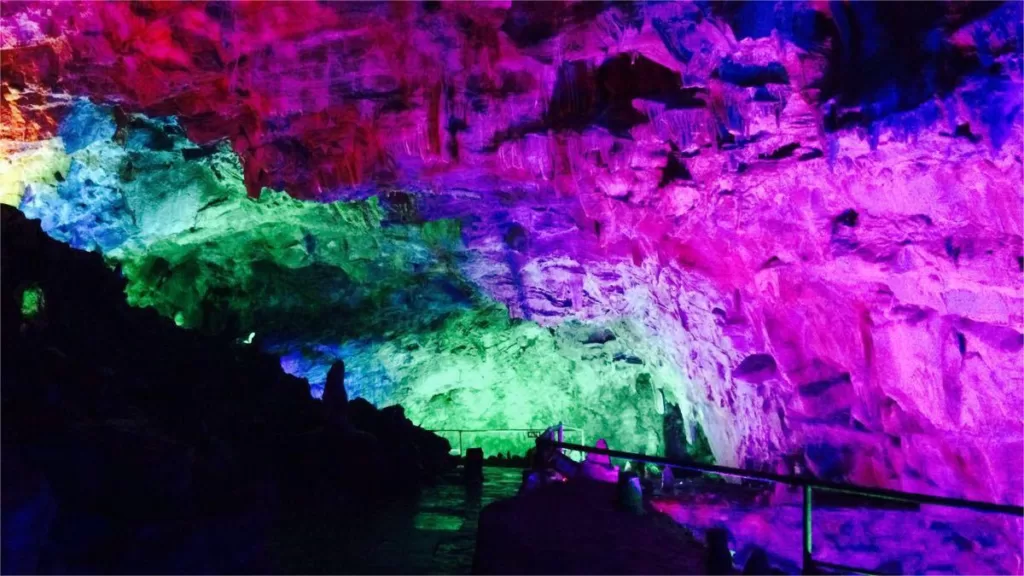The Yixing Ceramics Museum (宜兴陶瓷博物馆), situated in the heart of Yixing, China, is a testament to the rich history and vibrant culture of ceramics in this region. Established as the first specialized ceramic museum in China, it traces its roots back to the Yixing Ceramic Company Exhibition Room and the Yixing Ceramic Exhibition Hall. With nearly half a century of history, this museum stands as a guardian of the remarkable heritage of Yixing ceramics.
Comprising sixteen distinct exhibition halls, the museum takes visitors on a captivating journey through time and artistry. The halls are dedicated to various aspects of ceramics, including ancient ceramics, renowned masterpieces, purple clay teapots, exquisite ceramics, colorful ceramics, celadon, industrial sanitary ceramics, world ceramics, and domestic ceramics. These galleries house over 8,000 ceramic items, providing a dazzling showcase of contemporary Yixing ceramic culture and the masterful art of pottery.
Table of Contents
- Basic Information
- Location and Transportation
- Highlights of YIxing Ceramics Museum
- Video about Yixing Purple Clay Teapot
- Useful Tips Summarized from reviews
- Other Attractions in Yixing
Basic Information
| Website | https://www.yxtcbwg.com/ |
| Estimated Length of Tour | 2 – 3 hours |
| Ticket Price | 5 RMB |
| Opening Hours | 8.30 – 17.00; Last admission: 16.00 (Tuesday – Sunday) 13.30 – 17.00; Last admission: 16.00 on Mondays Closed on the first Monday of each month |
| Telephone Number | 0086-0510-87188255 |
Location and Transportation
The Yixing Ceramics Museum is located at the southern suburb of Yixing, Jiangsu Province. The exact address is No. 150, Dingshan North Road, Dingshu Town, Yixing, Wuxi, China. Tourists can take bus Yixing 152, Yixing 154, Yixing 201, Yixing 245, or Yixing 249, get off at Ceramics Museum Stop (陶瓷博物馆站), and walk about 200 meters to the northwest to reach the museum.
Highlights of YIxing Ceramics Museum
City of Ceramics
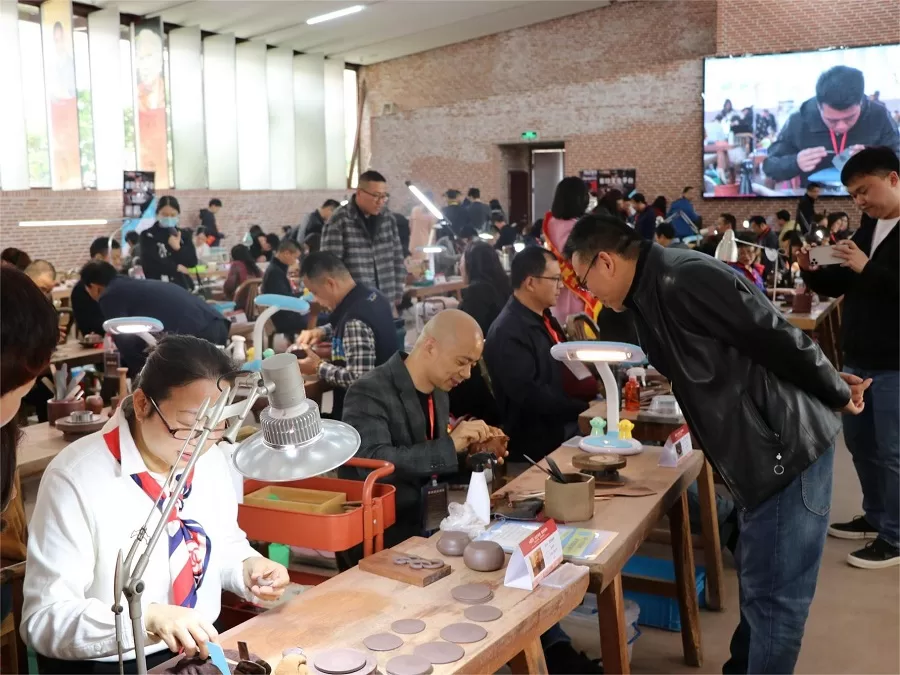
Yixing boasts an enduring history of ceramic production and a thriving ceramic culture, both of which are vividly portrayed through the museum’s collection. Spanning over 7,000 years from the mid-Neolithic period to the present day, ceramics have been an integral part of Yixing’s identity. The region’s skilled artisans have nurtured the creation of extraordinary art pieces, with a legacy that includes Han Dynasty pottery, Jin Dynasty celadon, Song and Ming Dynasty jun wares, and Ming and Qing Dynasty purple clay teapots. The contemporary era is represented by colorful glaze ceramics, fine arts ceramics, and exquisite ceramics, all of which emphasize Yixing’s grace and its distinguished status as the “City of Ceramics.”
Masterpiece Gallery
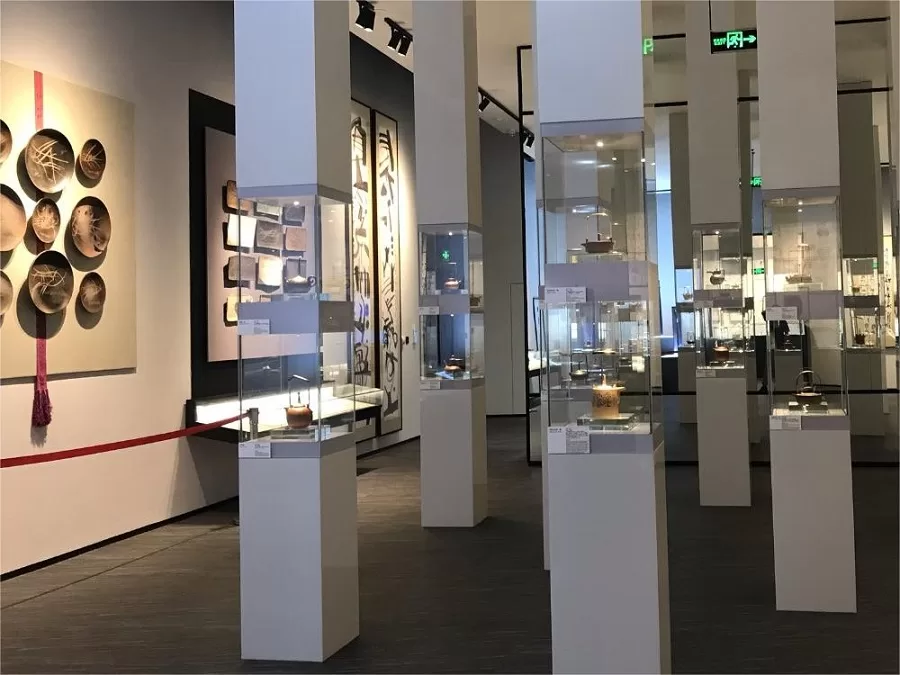
The emergence of purple clay pottery and the maturity of jun glaze ceramics in the Ming and Qing Dynasties, along with the active participation of literati, created a unique character for Yixing ceramics. As civilization progressed, artisans began to prioritize aesthetics in addition to functionality when crafting everyday items. These ceramics reflect an innate pursuit of balanced form, pleasing colors, and cultural sensibilities in design. The dignified and elegant appearance of purple clay teapots, blending calligraphy, painting, and traditional motifs, as well as the profound grace and refined decorative art of jun glaze ceramics, highlight the rich cultural heritage.
The Masterpiece Gallery showcases a diverse selection of precious artifacts, offering a condensed glimpse into Yixing ceramic culture and its historical significance.
Celadon Gallery
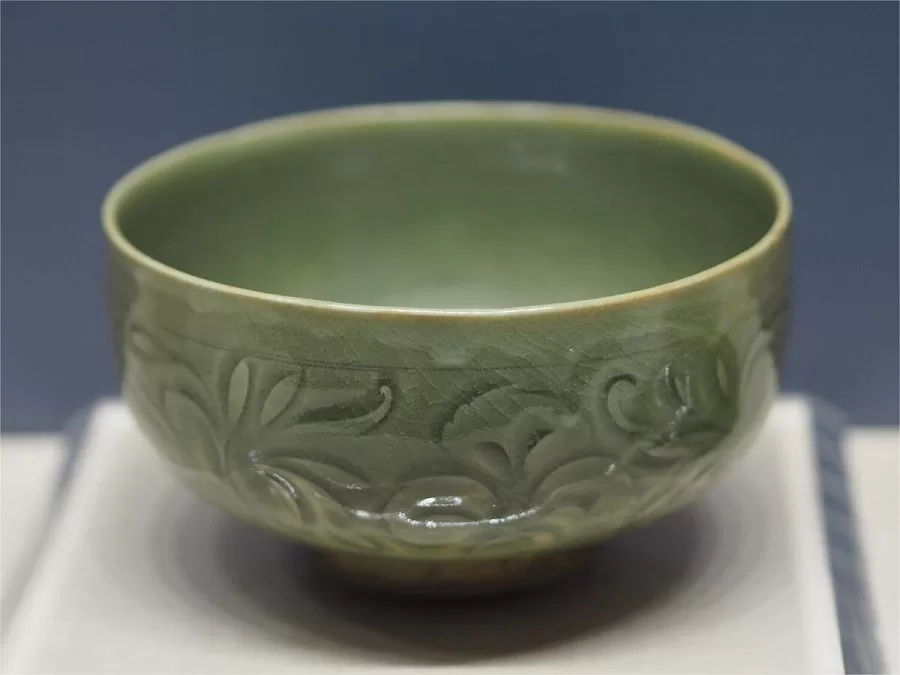
Yixing’s celadon production dates back to the Western Zhou period (11th century BC to 771 BC), with the craft achieving significant refinement during the Jin Dynasty (265-420). The Sui and Tang Dynasties (581-907) saw a proliferation of celadon varieties, a marked increase in production, and highly skilled craftsmanship. Yixing celadon is characterized by its fine texture, lustrous glaze with hints of blue, and an appearance resembling crystal-clear water, akin to the colors of emerald peaks and azure waters. Its elegant and graceful designs exude sophistication and charm. A wide range of traditional and innovatively designed products in the Celadon Gallery reflects the remarkable achievements of Yixing celadon.
Purple Clay Teapot Gallery
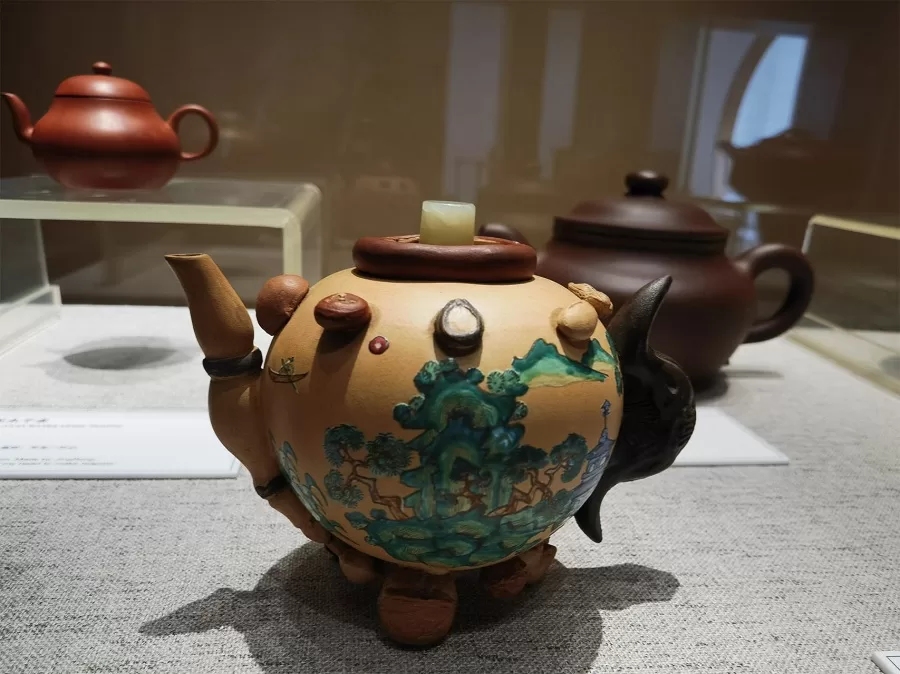
The history of Yixing purple clay pottery can be traced back to the middle of the Song Dynasty (960-1270). The proliferation of purple clay teapots began during the middle of the Ming Dynasty (1368-1644). In addition to teapots, the category includes basins, bottles, writing tools, sculptures, and more. Purple clay is an unglazed ceramic known for its fine texture, high iron content, excellent malleability, and a firing temperature higher than that of typical ceramics. Its physical properties and permeability make it ideal for steeping tea, allowing the pure aroma of the tea to be fully released. The rise of purple clay teapots was intertwined with the literati class, gradually endowing them with artistic value.
Jun Glaze Ceramics Gallery
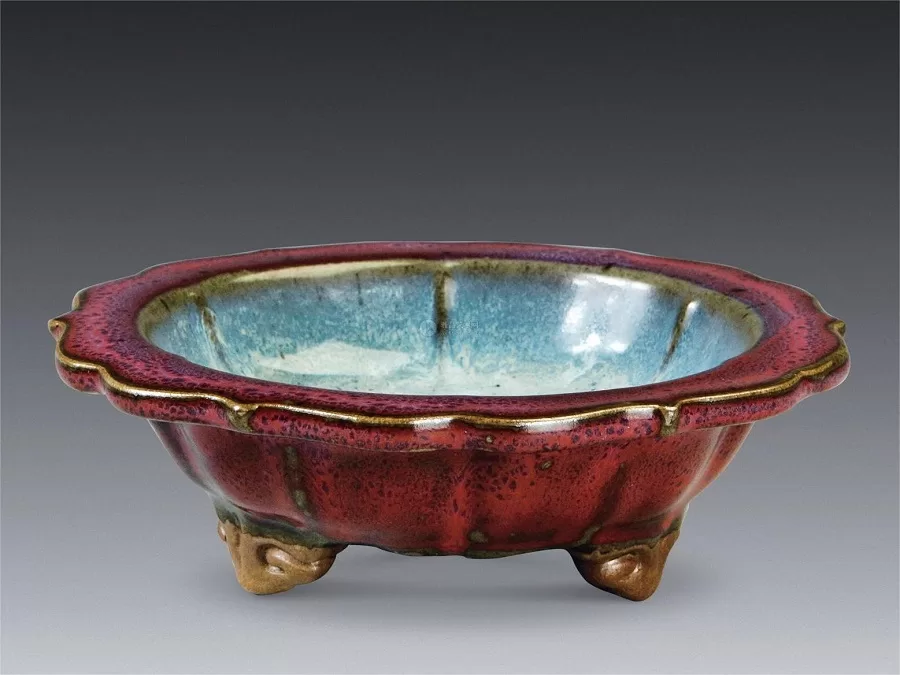
Yixing jun glaze ceramics, also known as Yijun ceramics, were famous for their unique production techniques, elegant shapes, and distinctive glaze colors during the Song Dynasty (960-1279). Notable kilns in history include the “Ouyao” from the Jiajing and Wanli periods of the Ming Dynasty and the “Geyao” from the Qianlong and Jiaqing periods of the Qing Dynasty. Jun glaze ceramics are renowned for their beautiful glaze colors, including blue, red, copper, and white, with blue jun being particularly prized. These ceramics primarily feature practical items for gardens and courtyards, reflecting a rich ethnic style and folk craftsmanship.
Video about Yixing Purple Clay Teapot
Useful Tips Summarized from reviews
Exquisite Purple Clay Crafts: The museum displays a wide variety of crafts made from purple clay, including lifelike sculptures of creatures like lobsters, cicadas, and mantises. Each piece is described as being highly detailed and lifelike, truly considered as exquisite masterpieces.
Historical Context – Shushan Ancient Street: Near the museum, Shushan Ancient Street is highlighted as a significant area from the Ming and Qing periods, serving as a major distribution center for Yixing ceramics and the birthplace of purple clay culture. Many of the historical buildings have been transformed into diverse studios, each maintaining the tradition of crafting pottery.
Hands-On Experience in Shushan Ancient Street: Visitors have the opportunity to try their hand at making purple clay teapots or cups in the studios along Shushan Ancient Street. It’s mentioned that children typically engage in cup making (around 2 hours), while adults can try their hand at teapot making (around 4 hours). Reservations are recommended for these activities.
Closing Time Consideration: Many shops on Shushan Ancient Street start closing around six or seven in the evening, so visitors should be mindful of the time to avoid missing out on any experiences or purchases.

